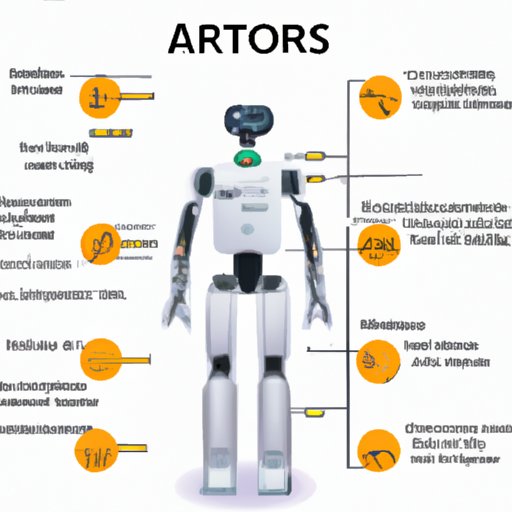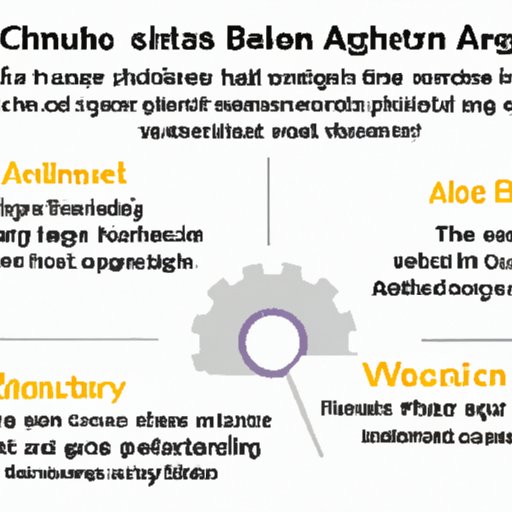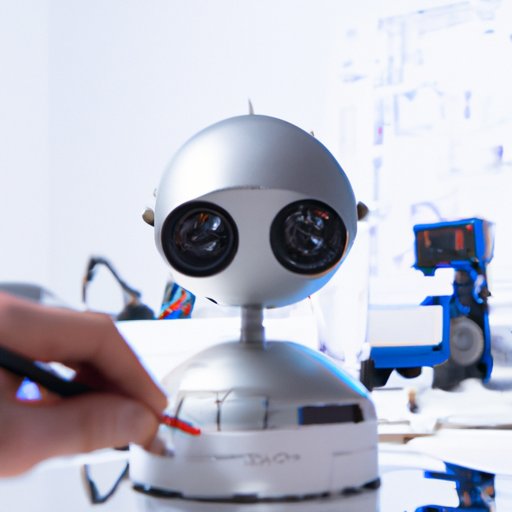Introduction
Artificial intelligence (AI) robots are increasingly popular in the modern world, performing a variety of tasks from medical diagnosis to home automation. They have become essential tools for many industries, and the demand for them continues to grow. As such, understanding how to build an AI robot is a valuable skill. In this article, we will explore the components, design, and challenges associated with creating an AI robot.

Components and Features of an AI Robot
Before you can begin constructing an AI robot, it is important to understand the various components and features required. The two main components are hardware and software.
Hardware Requirements
The hardware requirements for an AI robot depend on the specific tasks it is designed to perform. Generally speaking, the components can be divided into four categories: sensors, motors, power sources, and microcontrollers. Sensors are used to collect data from the environment, while motors allow the robot to move. Power sources provide the necessary energy for the robot, and microcontrollers enable it to process the data collected by the sensors.
Software Requirements
Software is what makes an AI robot “intelligent”. It enables the robot to interpret data from its sensors and make decisions based on that data. The most common type of software used for AI robots is artificial neural networks (ANNs), which are computer programs that imitate the structure and functioning of neurons in the human brain. Other types of software include fuzzy logic, evolutionary algorithms, and expert systems.
Designing and Constructing an AI Robot
Once you have a clear idea of the hardware and software requirements, you can begin designing and constructing your AI robot. The first step is to identify the tools and materials needed. This will depend on the specific tasks the robot is meant to perform, but some common materials include steel, aluminum, plastic, circuit boards, and wiring.
Outlining Steps for Programming
Programming is an essential part of designing and constructing an AI robot. You should start by outlining the steps the robot needs to take in order to complete its tasks. This includes setting up the hardware components, writing the code that will control the robot, and testing the code to ensure it works properly. Once the programming is complete, the robot is ready to be tested in the real world.

Challenges Associated with Building an AI Robot
Although building an AI robot can be a rewarding experience, there are also several challenges associated with it. Debugging and testing are two of the most common challenges. Debugging involves finding and fixing errors in the code, while testing ensures that the robot is able to perform its intended tasks. Additionally, maintaining the robot over time can be difficult, as the hardware and software may need to be updated or replaced.
Conclusion
Building an AI robot is a complex but achievable task. Understanding the components, design, and challenges associated with creating an AI robot is essential for successful construction. By following the steps outlined in this article, you can design and construct an AI robot that meets your needs.
Summary of Key Points
- An AI robot requires both hardware and software components.
- Designing and constructing an AI robot involves identifying tools and materials, programming the robot, and testing it in the real world.
- Debugging and testing, as well as maintaining the robot, can pose challenges when building an AI robot.
Tips and Best Practices
- Start by researching the specific tasks the robot is meant to perform.
- Develop a detailed plan before beginning to build the robot.
- Test the robot thoroughly before using it in the real world.
- Be prepared to troubleshoot and maintain the robot over time.
(Note: Is this article not meeting your expectations? Do you have knowledge or insights to share? Unlock new opportunities and expand your reach by joining our authors team. Click Registration to join us and share your expertise with our readers.)
